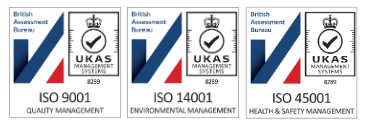Environmental Odour Consultants for Planning Assessment
Odour is a critical issue we are often called upon to assess, especially concerning planning applications. As expert odour assessment consultants in the UK, our team specialises in a range of odour assessment techniques to ensure your project meets regulatory requirements.
As environmental odour consultants, we provide tailored odour assessment services in the UK to help secure swift approval for your planning applications. Our expertise covers commercial kitchens, waste handling, and food factories where odour abatement is essential. We assess odour impacts when evaluating planning applications for activities that may release odours or when proposing sensitive uses near existing odorous processes.
Contact us today to ensure your planning application meets all odour assessment requirements with our expert consultancy services.
Email your requirements to
contact@aval-group.co.uk
Call us now to discuss
0333 006 2524
Get Your Free Quote
If you have a specific deadline, we will ensure that we meet your project timeline and all requirements.

Typical examples of potentially odorous activities are commercial kitchens, sewage works, intensive animal rearing, processing of animal remains solid waste management (for example composting), food industries, restaurants and some other industrial processes.
All our assessments are based on best practice guidances from the Institute of Air Quality Management and Environmental Agency.
Some of the key guidances are:
Our Services are ISO certified and accredited by the United Kingdom Accreditation Service (UKAS):

Our environmental odour consultants use a range of monitoring techniques for monitoring surveys, amongst which the three key techniques are:
Sniff Tests – Odour exposure inferred from measurements of intensity, frequency, duration, and offensiveness.
Field Olfactometry – Odour exposure inferred from measured concentration (Dilutions-to-Threshold, similar to (ou/m³), together with frequency, duration, and offensiveness.
Compound Analysis – Odour exposure inferred from measured concentration (µg/m³) and detection threshold, together with frequency, duration, and offensiveness.
Industrial Odour Assessment
We provide a range of odour assessments, odour surveys, and management services to support a planning application, environmental permitting application, or resolve a nuisance issue that may be affecting local amenities. We also advise on mitigation measures and, if required, prepare mitigation statements.
Our odour consultants have a wealth of experience across all types of industry, and therefore, we can design odour sampling strategies to reflect your specific requirements. All our sampling is carried out in accordance with the European Standard for Olfactometry or other published national and international technical guidance, and samples are analysed using an accredited laboratory.
Our Expertise
Odour Survey and Assessment for Commercial Kitchens/ Restaurants (London and other locations across the UK)
Assessment of residential suitability in terms of odour impact from restaurants and other commercial kitchens. The assessment also takes into account any mitigation measures that may be required as part of the building and kitchen extract design for commercial kitchens. Guidance is provided by Defra for estimating the odour risk taking into account the stack/ exhaust height, the size of the kitchen, the type of kitchen and proximity to sensitive receptors.

Industrial Sites (various location)
Our odour consultants have carried out odour survey and assessment for a range of industrial activities to ensure that operational activities are not going to adversely impact on existing sensitive receptors. We have carried out odour assessment for the following types of industrial sites:
- Waste incineration plant;
- Wastewater treatment plant;
- Steelworks and foundries;
- Asphalt production plant;
- Animal food production plant; and
- Agricultural farmlands and livestock farms.

Planning and Environmental Permitting
- A description of existing baseline conditions;
- Details of the location of receptors and their relative sensitivities to odour effects;
- A description of potential sources;
- Details of control/mitigation measures incorporated into the scheme;
- A prediction or observation (or combination of both), using appropriate assessment tools, of the likely impact and resulting effects at relevant sensitive receptors, taking into account of:
- the magnitude of any emissions;
- meteorological characteristics at the site;
- the dispersion and dilution afforded by the pathway to the receptors and the resulting magnitude;
- the sensitivity of the receptors;
- The residual impacts and their effects; and
- A conclusion on the significance of the residual effect, i.e. whether “significant” or “not significant”.

Odour Management Plan (OMP)
An OMP is a live working document that formalises and describes how odour issues will be managed on-site. An OMP forms part of the operational management system (indeed it may form part of a site’s wider Environmental Management System or Integrated Management System).
An OMP should show how odours will be managed and controlled so as to prevent or minimise the impact. As well as covering normal operations, it should anticipate and plan for abnormal events and foreseeable accidents and incidents.
OMP is not an impact assessment; it’s a mitigation/control measure plan for the site. The plan should be realistic and simple, that can be easily actioned by the site operatives.
We regularly update our website content to maintain its accuracy and relevance. Thus enhancing user experience and helping both new and returning visitors To ensure the accuracy and relevance of our website, we frequently update its content. This not only improves the user experience but also assists both new and returning visitors in quickly and effortlessly finding the information they need.
